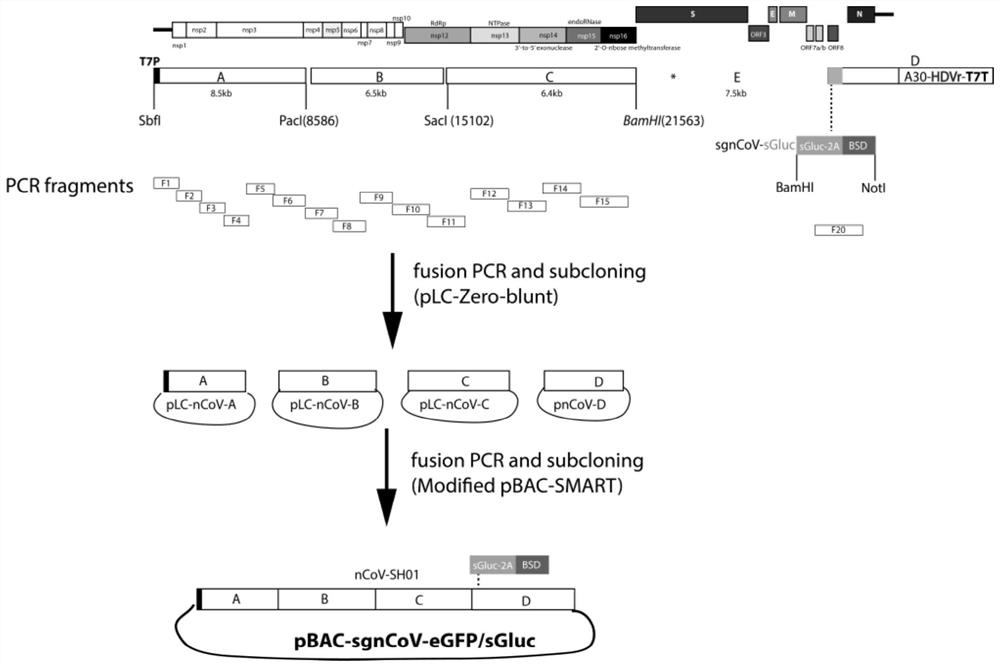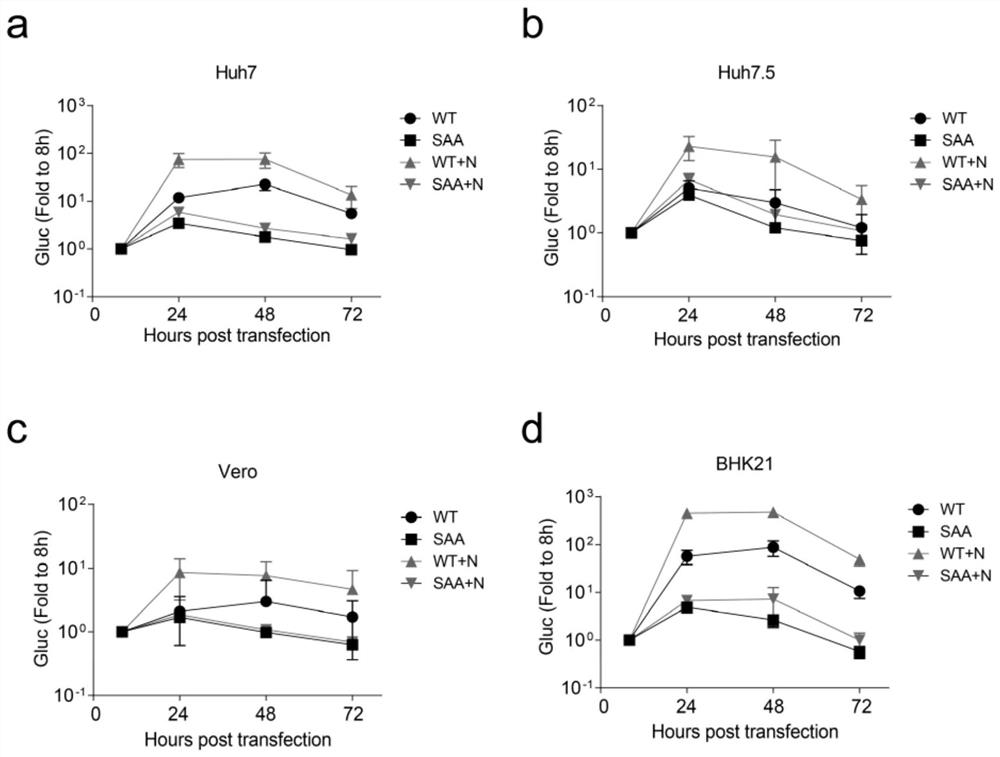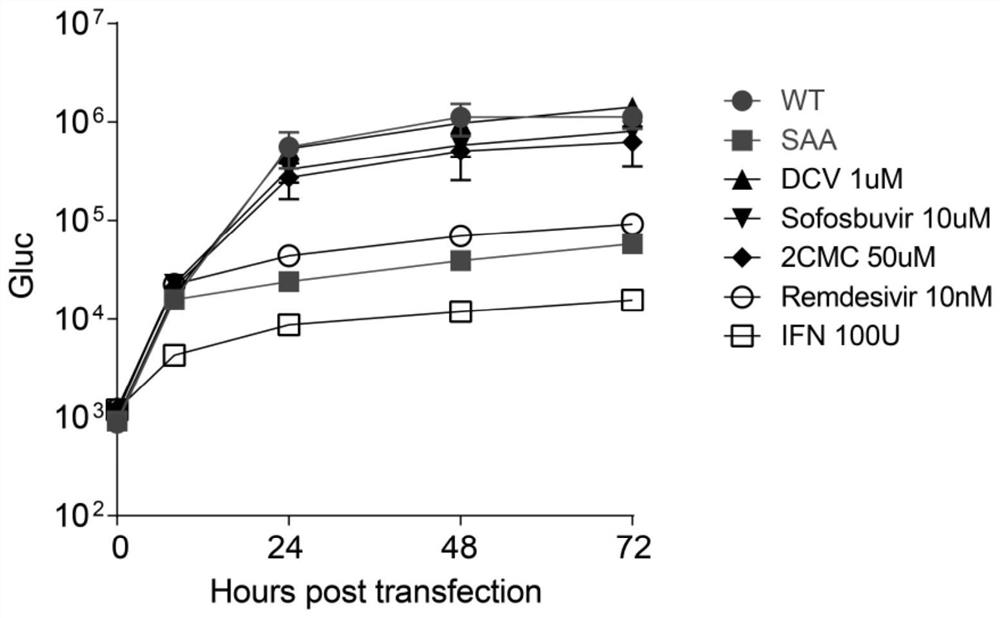Cloning, construction and application of new coronavirus SARS-CoV-2 subgenome replicon based on bacterial artificial chromosome
A genome and replicon technology, applied in applications, viruses, genetic engineering, etc., can solve problems such as screening efficiency obstacles
- Summary
- Abstract
- Description
- Claims
- Application Information
AI Technical Summary
Problems solved by technology
Method used
Image
Examples
Embodiment 1
[0071] Embodiment 1: the construction of new coronavirus (SARS-CoV-2) subgenome clone
[0072] Using BAC ( figure 1 ) and in vitro connection method ( Figure 4 ) to construct the subgenomic DNA of the new coronavirus (SARS-CoV-2), and use the in vitro transcription kit (mMESSAGE mMACHINE, ambion) to transcribe in vitro to produce subgenomic RNA containing a reporter gene (such as sGluc), and through transfection, it can initiate The viral replication cycle results in the expression of a reporter gene, and the level of expression of the reporter gene indicates the level of viral replication. And there is no difference in the replication ability between the RNA produced by ligation in vitro and the RNA produced by the BAC plasmid ( Figure 4 ).
Embodiment 2
[0073] Embodiment 2: the level of replication of new coronavirus (SARS-CoV-2) subgenomic RNA in cells
[0074] The RNA produced by in vitro transcription is transfected into different cells using conventional RNA transfection reagents, such as Mirus mRNA transfection reagent, and by comparing the RNA polymerase-deficient mutant (SAA) control, it shows obvious virus replication signals ( figure 2 ).
Embodiment 3
[0075] Embodiment 3: Utilize the replicon system with reporter gene to carry out new coronavirus (SARS-CoV-2) drug evaluation
[0076] The cells were pretreated with different compounds, and then transfected with the subgenomic RNA of the new coronavirus (SARS-CoV-2) as described above, and the luciferase signal secreted in the supernatant was detected at different times after transfection to evaluate the antiviral activity of the drug. Such as image 3 As shown, 10nM Remdesivir, 100U / ml IFN-α, 1μM Daclatasvir, 10μM Sofosbuvir, 50μM 2CMC were treated for 4 hours, and then transfected with subgenomic RNA of SARS-CoV-2, only Remdesivir and interferon IFN -α exhibited significant antiviral activity.
PUM
 Login to View More
Login to View More Abstract
Description
Claims
Application Information
 Login to View More
Login to View More - R&D
- Intellectual Property
- Life Sciences
- Materials
- Tech Scout
- Unparalleled Data Quality
- Higher Quality Content
- 60% Fewer Hallucinations
Browse by: Latest US Patents, China's latest patents, Technical Efficacy Thesaurus, Application Domain, Technology Topic, Popular Technical Reports.
© 2025 PatSnap. All rights reserved.Legal|Privacy policy|Modern Slavery Act Transparency Statement|Sitemap|About US| Contact US: help@patsnap.com



